We’ve cultivated garlic as a species for six thousand years…
…so when you find yourself wondering when is the perfect moment to harvest your garlic, know you are not the first person to wonder this.
In truth, the ‘perfect moment’ is up to a week and sometimes more, depending on the weather.
Here in the Northeast, mid-July, that ‘moment’ is just about…now!
Here is the one consideration to look for, demystifying the predicament:
It’s All in the Leaves
Wait for at least two or three bottom leaves to turn brown before you harvest your garlic.
Each of the leaves above ground have a corresponding ‘wrapper’ around each bulb, becoming papery when cured. Once one third to one half of the leaves are brown and brittle, you have strong bulb wrappers awaiting you and your garlic is truly ready to harvest.
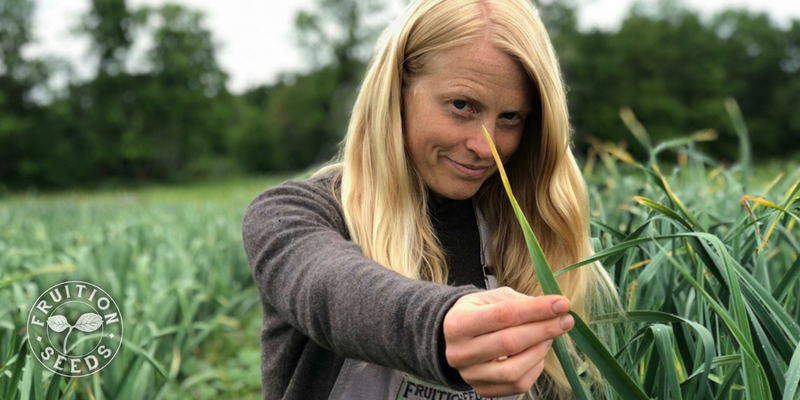
Nutrient deficiency or nearing maturity? If your leaves are fully brown, from tip to stalk and it’s July, your garlic is almost ready to harvest.
Yellowing, brown leaves often signal nutrient deficiency.
How can you tell the difference?…
Timing
Any leaf discoloration before July is almost certainly a nutrition issue. Dilute fish emulsion sprayed on leaves or poured on roots is our go-to for hungry garlic.
Once we’re in July, garlic is quickly maturing (which muddies the water for sure) but mostly: Don’t worry and just wait. At that point, extra nutrients most likely won’t affect yield and discoloration is most likely signs of maturity.
Where?
If a garlic leaf is yellowing on its tip before July, you’ve got a nutrient deficiency.
Maturing leaves in July turn brown rather than yellow/brown and the color will turn uniformly throughout the leaf, from stalk to tip.
Here are a few more considerations, as you ponder when to harvest your garlic this season:
Hardneck vs. Softneck
The stalks of hardneck varieties, and thus their leaves, are quite upright and rigid throughout the season.
Softneck garlic, by comparison, has a soft stalk that leans and finally falls over once it’s ready to harvest, quite like it’s close cousin, the onion.
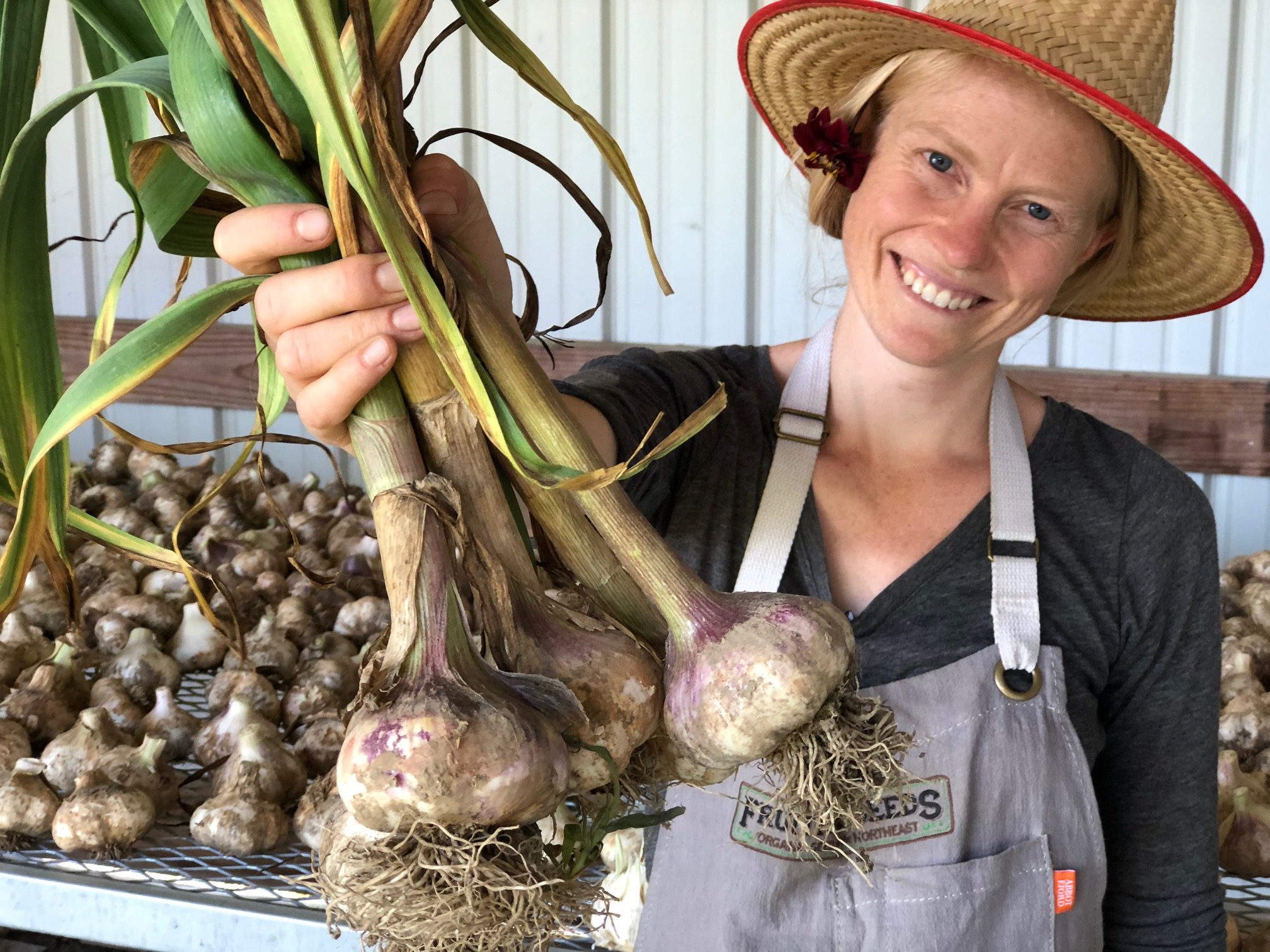
Softneck garlic, like their onion cousins, will indicate maturity with a leaning and then bent stalk. This variety is Regatusso.
Not sure which type you have? If your garlic grew a ‘scape’ (see photo below) twisting up from the top, you have a hardneck. Scapes are delicious (pickled in a dilly bean brine, that is my favorite…!) and I hope you enjoy them as much as I do. If you don’t harvest them (we always seem to miss a handful), they’ll curl marvelously and then straighten toward the sky. This straightening is another sign that your garlic is almost ready to harvest.
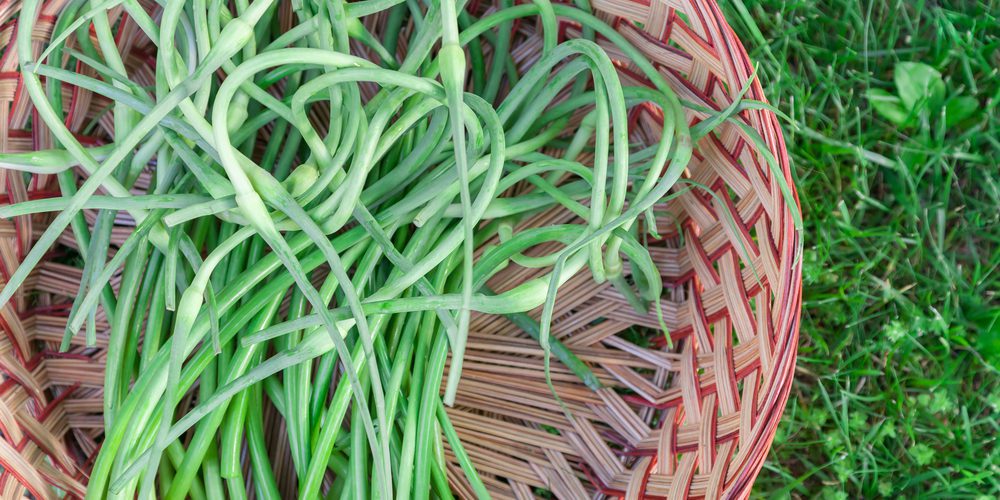
Straightening scapes is another sign that your hardneck garlic is nearing harvest. I prefer to eat them, myself…!
For all garlic types, look for the drying down leaves as your key indicator of ripeness.
Here is a fun little video introduction to the diversity of garlic
Peel It Back
Another way to tell if your garlic is ready to harvest is to lift one bulb and peel back its wrappers. If the cloves have differentiated from each other, you’re close. If each clove has distinct skin, you’re getting closer. If each clove has skin that peels away easily, you have arrived.
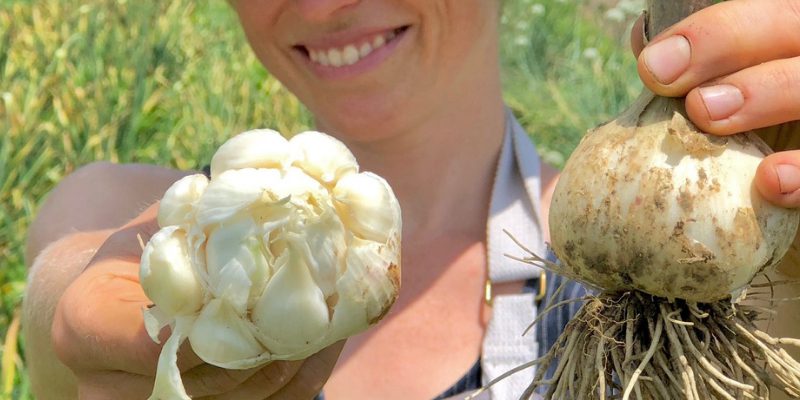
Garlic ready to harvest has individual cloves with distinct skins.
Relative Maturity
Friends, know different varieties mature at different times. Softneck types tend to mature faster than hardnecks. As I write, Regatuso (our sweet artichoke-type softneck) is ready to harvest while our Italy Hill White (a rich porcelain-type hardneck) is perhaps ten days to two weeks away from harvest.
At Fruition, we grow many thousands of garlic bulbs of a dozen different varieties. We harvest them all on one day and each variety is at a slightly different point in its maturity. If you have less than a few hundred cloves of multiple varieties, it may well be worth the effort to harvest each variety in its prime. Garlic harvested in its prime and cured perfectly will store the longest.
Whether the weather
Harvest your garlic when the soil is relatively dry. In general, it’s best to be in your garden when the soil is dry, reducing the chances of spreading disease and compacting the soil. This also allows the bulb to release from the ground as easily as possible.
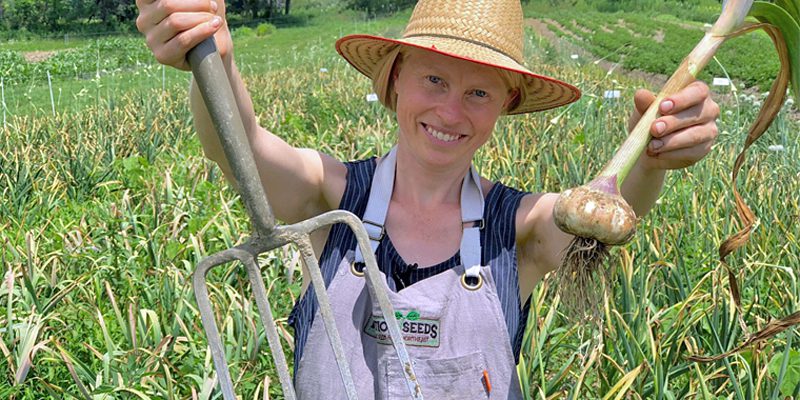
You’re stronger than you think. Nonetheless, use your fork! Trowels work, too.
As tempting as it is to pull your garlic straight from the ground, lift each bulb with a garden fork or trowel. It’s easy to break the stems, leaving the bulbs in the ground. This isn’t the worst, but it does prevent that garlic bulb from curing for winter storage. Any bulbs that separate from the stalk at harvest are set aside to be enjoyed as quickly as possible, ideally within a few weeks.
Enjoy the Harvest, Friends!
Stay tuned for how to cure your garlic, Friends! Here is a quick video tutorial on drying and curing garlic, in the meantime.
Sow Seeds & Sing Songs,

and the Many Beings of Fruition
ps
Hop over to Fruition’s Growing Library for the full Garlic Growing Guide!
pps
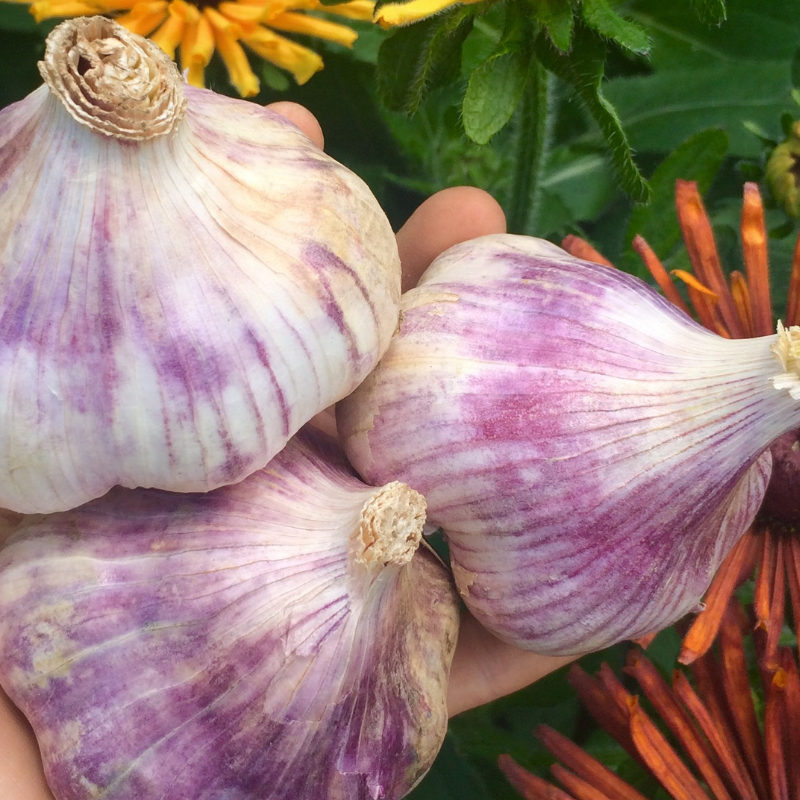
Enjoy Fruition's Course...
Growing
Garlic & Shallots
Organically!
Fruition’s free online course shares dozens of video tutorials to surround you with abundance for seasons to come.
We look so forward to joining you on the journey!

I love it. She is very good at explaining
Harvesting garlic is such a satisfying and rewarding experience, and this article provided excellent guidance on the process! I found the tips on knowing when garlic is ready for harvest, such as observing yellowing leaves and checking for bulb size and firmness, to be very helpful.